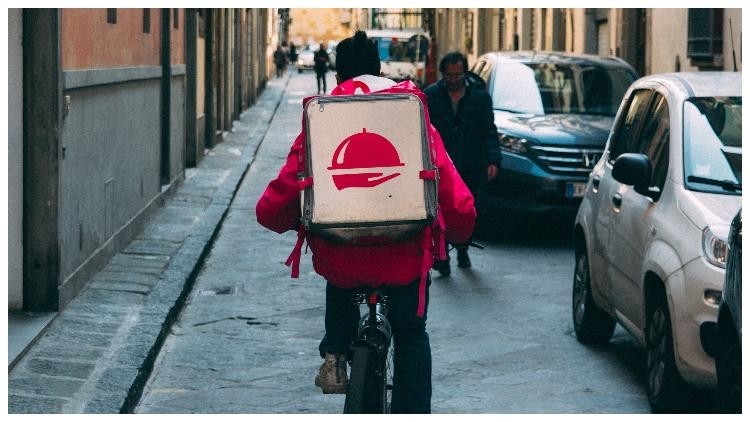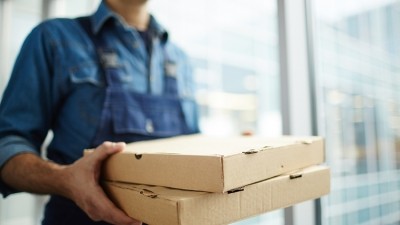#UnitedWeStand
How to set up a delivery service

Operators have been forced to adapt their trading model to mitigate the impact of coronavirus, with many already changing their offer to takeaways in a bid to maintain cash flow, pay rent, pay staff and fulfil customers’ pub-grub appetites.
But while the industry has welcomed the Government’s permission to allow pubs to operate as takeaways and home delivery services, there is still much to learn about the delivery side, and ensuring the best chance of making it a success.
So, among some of our first #UnitedWeStand features, we bring you some key advice on how to acclimatise to a delivery enterprise.
Matthew Crisp, co-owner of the Anchor Inn, Ringmer, East Sussex, said: “What we need to do, as publicans, is show real clarity and visibility to our customers about what we’re trying to do and what we’re trying to provide in the safest possible way.
“It’s the same as if they came into the pub, we’re not treating it any differently apart from the social distancing and the enforcement of cleanliness and use of hand sanitiser.
“You really do have one shot at this because if you get it wrong, one: you’re not going to be able to pursue this type of trade, and two: if and when we recover from this, our reputation could be damaged if it’s not done right.
“So really, I don’t think any publican shouldn’t be taking this lightly because the nervousness in this country is palpable.”
Tough logistics
Despite successfully launching the delivery element last weekend (Friday 20 March), Crisp said it was still challenging.
He said: “The logistics to start with were really tough because it is very different to running service in the pub.”
While it’s one thing for publicans to take on board a completely different trading style to preserve that community service, it is another thing to also consider the Government’s orders of social distancing.
So Crisp has laid out some key ideas that could prove useful if you take up the idea of initiating deliveries:
Social distancing
He says: “Deliveries consist of us ringing the customer when we’re outside. We will then put the delivery on your doorstep, we will then walk back to keep two metres away and then let you to open your door to collect it.”
Payment
Crisp explains: “This will mean payment over the phone [where possible] but if they do need to pay by cash, then we will be asking them to put it in envelope and leave it outside their door. You can then take your food, leave the cash, close the door and we will collect it.”
Minimal contact
“The chef places his orders under the hot lamp, then into the boxes and then he loads the bags up so it’s only one person touching the containers and the food. It’s just one chef and that’s it,” he adds. “This gives the customer a real satisfaction that it’s not going through multiple hands.”
Setting up online ordering
“We’ve now got a website and an app for ordering online. We’ve done it all ourselves because, in these times when we’re struggling, there are other companies that charge a certain percentage with every order you get and there are start-up fees too if you let them set it all up.”
Setting up online orders
Conor McCarthy, chief executive of online ordering company Flipdish, told Big Hospitality that while offering phone orders may be tempting, it could tie up a staff member for most of the shift, which could result in annoying as many customers as you manage to serve.
But, there are some providers that are offering to help during this uncertain time.
Access Hospitality has pledged its support to set up a delivery or click-and-collect ordering service within 48 hours, which will be free for the first two months while Access covers the cost and all implementation fees.
Access Hospitality managing director Henry Seddon said: “Many operators are turning their sites into ‘dark kitchens’ enabling them to offer a takeaway, click-and-collect or delivery option. This is providing a vital community service as well as avoiding business failure following compulsory closures.
“While switching operations to focus on collection or delivery will require a concerted effort, Access Hospitality is taking one element off their minds, by working with its partners QikServe and Preoday to provide an online website with order-and-pay capability, and getting operators set up within 48 hours to help them get their new revenue stream up and running.”
The software can be used as a stand-alone system or alongside Access EPoS to offer as much flexibility as possible and provide the tools for operators to diversify and continue trading, having been instructed to close their premises on Friday 20 March.
The free two-month period will form the first phase of a 12-month contractual commitment and is expected to offer a lifeline to operators when they’re most in need of practical support.
So as pubs close their dine-in custom, there is plenty of advice and support for pubs to take advantage of the offer as more and more sites seek to serve families in their homes through delivery, while ensuring customers’ safety by abiding to Government guidelines.
Relieving profitability pressures
Deliveroo, one of the big guns in delivery-only kitchens, is also offering guidance as restaurants and pubs make the transition from dine-in to delivery-only outlets during the period of the pandemic.
In its ‘Deliveroo Policy’, the company has acknowledged how delivery volumes won’t be matching previous on-site volumes with the current lockdown, but states below some ways that can relieve profitability pressures.
Menu simplification: In most instances, reducing your menu for a delivery-only environment will drive operational and supply chain efficiencies while allowing you to satisfy the majority of consumer demand. Deliveroo has seen that 80-90% of orders placed are concentrated in less than half of menu items, which would cut down on menu complexity.
Opening hours: Consider adjusting your open hours to reduce operating costs. Orders are highly concentrated in peak times, and time between peaks can be used to prep as much as possible for dinner service as well as the following day’s lunch peak.
New ways to utilise staff and resources: Some restaurants have also been exploring new offerings that can help use staff and reduce food wastage. For example, frozen meals or meals that are easily re-heatable can be a convenient way for customers to fulfil more of their meal-time needs in a single order.
Site selection: If you have multiple locations and must choose which to keep open, consider factors such as which site would enable maximum population coverage and safe space inside stores.
Best practice
Deliveroo also outlines how food outlets can run delivery-only outlets safely, covering issues such as how to minimise contact, packaging and hygiene best practice.
How should stores be set up physically to avoid cross-contamination?
• Have a contact-free hand-off with delivery riders/drivers
• Layouts optimised for both high and low-order volumes
How should staff and other personnel be organised?
• Roles and responsibilities
• Performance tracking
• Employee welfare
How can you provide comfort to customers that the operations uphold the highest levels of safety?
• Stronger hygiene practices
• Focus on packaging
• Customer queries
Taking it seriously
So with the UK in lockdown forcing pubs to close and asking families to stay home, more and more pubs are turning to delivery as a way to sustain their businesses and keep serving customers.
But, Crisp added: “Don’t act like the typical takeaway or delivery service like we might get when we’ve had a few beers, grabbing a kebab on the way home.
“You must take deliveries and takeaways seriously as you would do running a normal food service on a busy bank holiday weekend.
“But you must show your customers what extra measures you are taking, be it supplier statements or links to their advice page – customer confidence has never been so vital.
“You’ve just got to give people confidence that what you’re doing is safe and responsible, while making sure the product travels well and you’re doing the best you can.
“They need to see your bringing the food from the kitchen and effectively putting it at their table exactly like you would when you’re in the pub. You need to be moving your dining seats into people’s houses.”
If you’re still sat on the fence, unsure of whether to take the plunge, let us know at The Morning Advertiser. We are here to help and will advise you where we can. So keep an eye on the website at morningadvertiser.co.uk and use the hashtag #UnitedWeStand.







